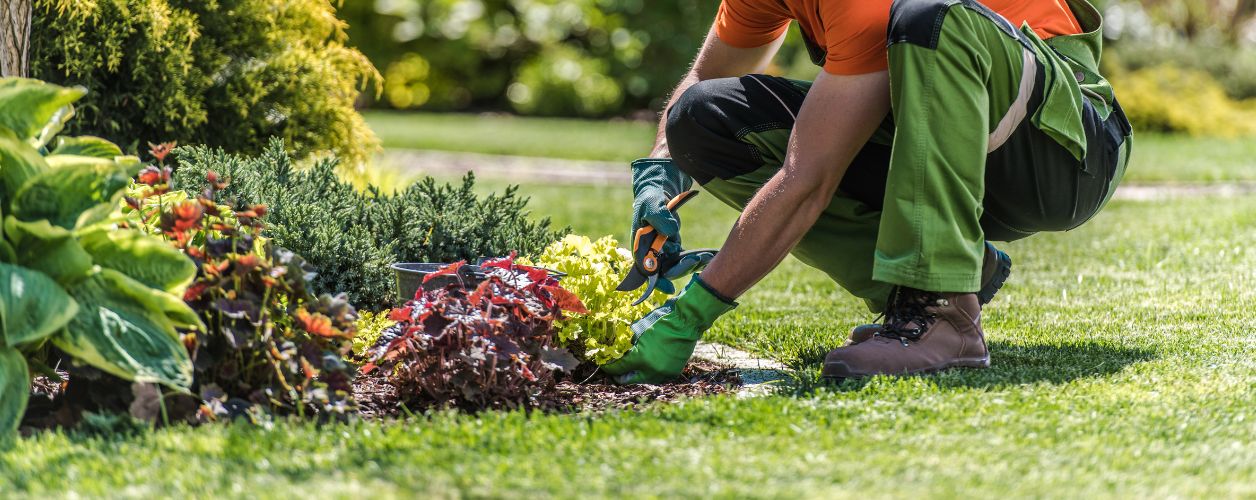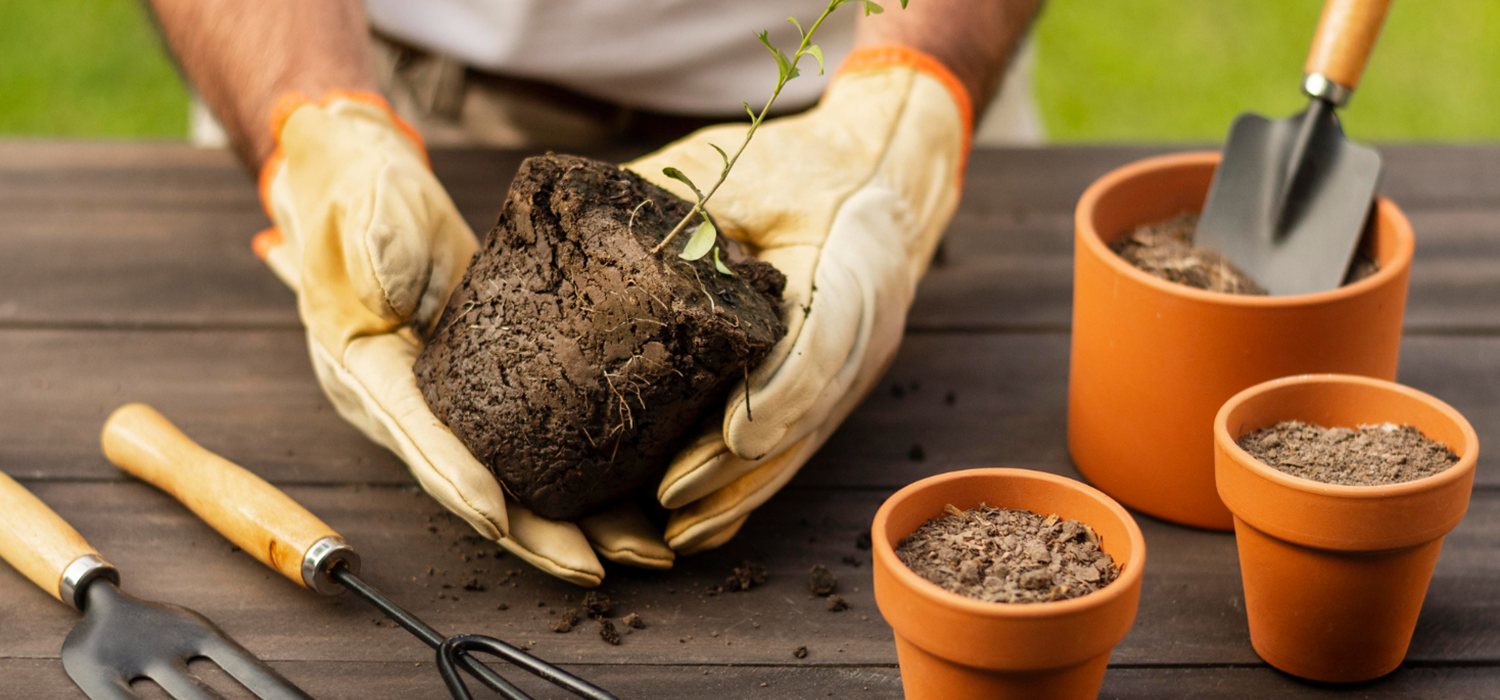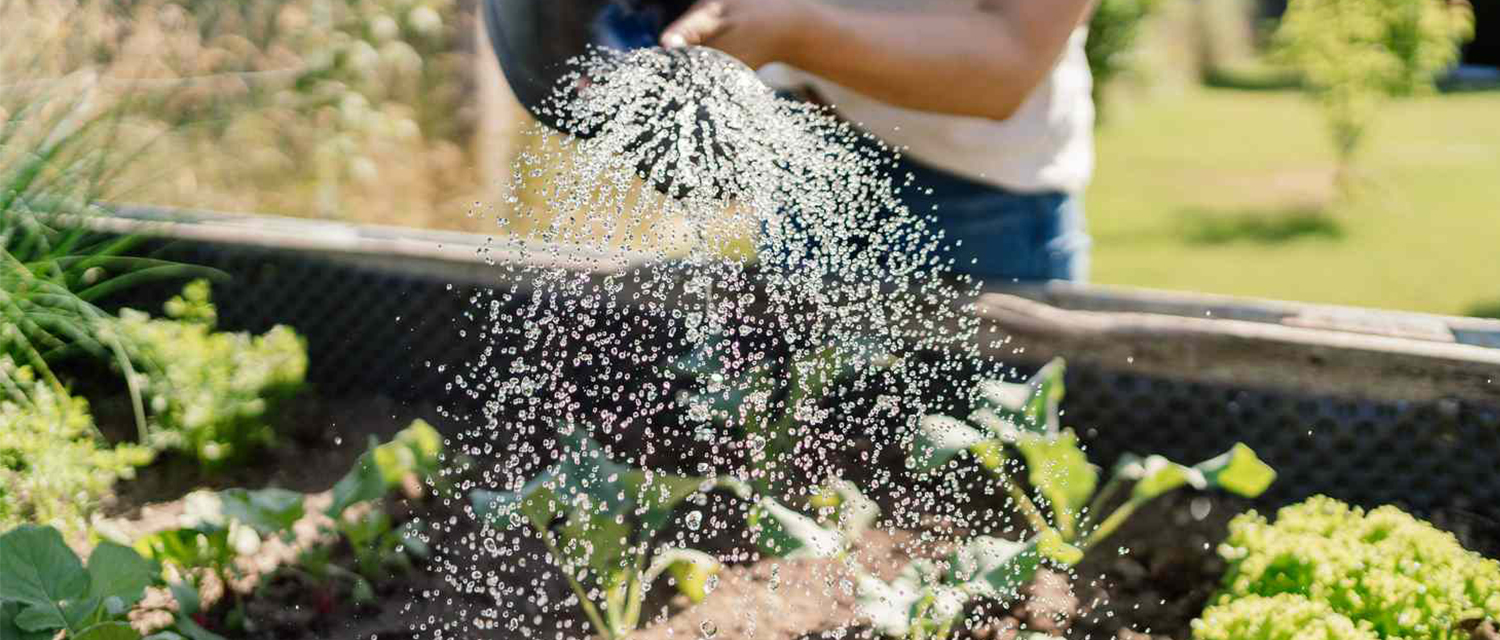Best Plants for Balconies: Low-Maintenance & Space-Saving Ideas
Why not have a garden in a small apartment? It’s time to buy a few plants to make that balcony come close to making a lush, green paradise. For anybody living in an apartment or a high-rise building, with a carefully chosen assortment of plants, it is possible to transform the balcony space and ensure fresh air circulation. There might also be the possibility of fresh herbs and vegetables for the kitchen.
If you want to know the best plants for balconies that require low maintenance and a small space, this guide is for you. Here are the best maintenance-free plant options, space-saving ideas, and much-needed secrets to ensure a balcony garden flourishes.
Why Plan for a Balcony Garden?
Having a few plants on your balcony has many other benefits as beautifying the place, which goes as follows:
- Cleaner Air: Plants purify the air by reducing toxins and putting out oxygen.
- Stress Relief: Studies show green plants have a relaxing effect on stress and anxiety levels.
- Homegrown Produce: Grow your food, thereby reducing food costs, by planting herbs and vegetables, and several fruit-bearing plants.
- Enhances Privacy: Tall plants and climbers can act as natural screens, offering shade and seclusion.
- Adds Value to a Home: An attractive balcony garden will enhance the lustre of one's home and make it more valuable.
Low-Maintenance Balcony Plants
Not everyone has time for high-maintenance plants. And quite frankly, if you're away quite a lot or just don't consider yourself a very good gardener, low-maintenance plants will allow you to enjoy greenery without too much hard work. Here are some of the best easy-care plants that do well on balconies:
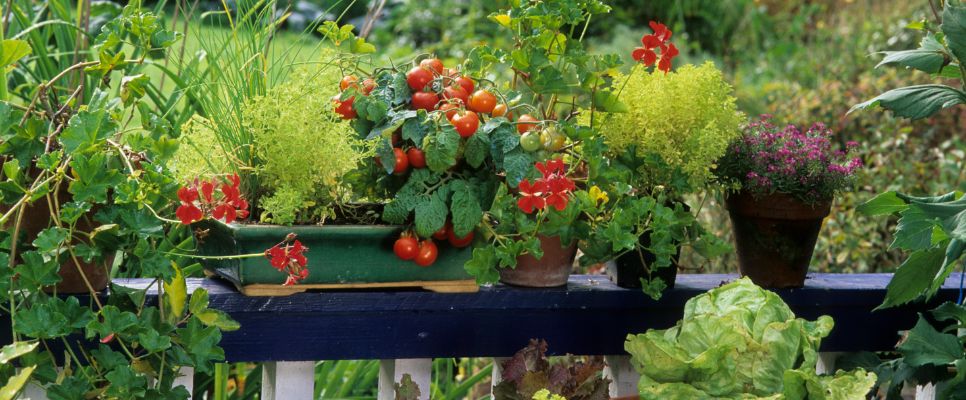
1. Petunias
Petunias are fantastic balcony plants for use in hanging baskets as well. These colourful blooms will flourish in heat and humidity conditions are a must for any Australian summer. Showing great variation of colours and varieties, petunias truly can bloom from spring clear through to fall with the right care.
Care Tips:
- Use free-draining soil.
- Regularly water, but avoid sogginess.
- Dead-head spent blooms to encourage flowers to keep coming in.
2. Rosemary
Rosemary is a Mediterranean herb that grows in the sun and needs dry places. Rosemary will be a good plant for your balcony garden because it's so beautiful and even useful. Use fragrant leaves for cooking, and expect the plant itself to produce small flowers in colours like pink, white, and blue.
Care Tips:
- Minimal watering is required (once a week is often enough).
- Prefers a drainage pot with enough air circulation.
- Can grow plants with other Mediterranean herbs such as thyme and oregano.
3. Lavender
This plant, which is called lavender, is known to everyone because it has scents that can alleviate stress. It beautifies and perfumes any balcony with blooming flowers. Some other dwarf varieties, such as 'Little Lottie' or 'Nana Alba', are best suited for container gardening and cope with the scorch of the hard Australian sun.
Care Tips:
- Requires full sun (no less than six hours per day).
- Use sandy soil with fine drainage.
- Cut back after flowering to promote new growth.
4. Monstera Deliciosa
If your balcony is more shaded than sunny outside, the Monstera plant is a great option. These tropical plants thrive on neglect and do not take a lot of effort to maintain, making them perfect for novices.
Care Tips:
- Keep in indirect light or partial shade.
- Water only when the top inch of soil feels dry.
- Provide a moss pole or trellis for climbing.
5. Geraniums
Among the most highly popular flowers in Australia, geraniums can stand not only heat but also grow very bright flowers. Their preference for pots and hanging baskets also makes them an easy way to dress up your balcony.
Care Tips:
- Water in the morning to prevent fungal diseases.
- Regular deadheading will ensure more blooms.
- Sun placement will ensure the best results. Space-saving plants suited for small balconies.
Make the most of a tiny balcony, as it is all about efficiency. These plants will assist you in maximizing foliage without cramping your space.
6. Succulents
Succulents are one of the finest plants for balconies, especially those that are relatively small. They require very little water and can come from either full sun or partial shade.
Care Tips:
- Use cactus soil for super drainage.
- Water sparingly; usually, once every two weeks is enough.
- Hang on sideways vertically or mount container pots on the walls.
7. Dwarf Citrus Trees (Kumquats & Lemons)
Most people think that citrus trees need a garden, but in fact, dwarf varieties such as kumquats and lemons can happily grow just in pots. Not only do they produce fruit, but they also make a wonderful addition to your balcony.
Care Tips:
- Use a very large pot that drains well.
- Find a sunny location. Fertilize regularly, especially when the fruit is set.
8. Jasmine
Jasmine is a very good climbing plant, occupying little ground space. It produces pretty and perfumed flowers, and you can train it to grow along balcony railings or trellises.
Care Tips:
- Six hours of sunlight minimum.
- Water regularly, particularly when it's hot.
- Cut after it's flowered into shape.
9. Hanging Strawberries
Another fruit that thrives in hanging baskets and is delightfully enjoyed with little effort is strawberries. Planting a variety of strawberries gives you fruit flavour all summer long.
Care Tips:
- Use porous soil with organic compost.
- Moisten regularly, especially during fruiting.
- Place in full sun for best yields.
10. Bamboo
Bamboo is the best in bringing nature to the screen and is a way to give secrecy to your balcony. It is very fast-growing and preferably suited to blotching wind or shading.
Care Tips:
- Pick the clumping variety of bamboo to stop it from getting so aggressive in growing.
- Water it regularly, especially during hot weather. Prune occasionally to control the size and shape.
What Would You Grow in Pots on A Balcony?
Numerous plants grow well in pots on a balcony. You can also ask local gardeners for region-specific recommendations. Most herbs do fine, such as basil, mint, parsley, thyme, and rosemary. Additionally, leafy greens, such as spinach, lettuce, and kale, work well. Other small vegetables such as cherry tomatoes, peppers, radishes, and carrots also do very well in pots. Strawberries and dwarf fruit trees will provide secure fresh food. The flowers are petunias, marigolds, geraniums, and begonias, creating the feel as well as the smell. Succulents and ferns do well in shady balconies while sun-loving plants like lavender and rosemary flourish in bright spaces.
What Are Easy-to-Grow Plants For Your Balcony?
Few require almost no attention. Mint and basil are herbs that grow fast and need little attention. Leafy vegetables such as lettuce and spinach boast continuous harvesting. Cherry tomatoes and peppers do perfectly well in small spaces and require very simple care. Succulents, such as aloe vera and jade plants, require minimal watering to survive. Hardy plants such as marigold and petunia are very easy to grow with no attention. Strawberries can be an easy option in hanging baskets if growing fruits.
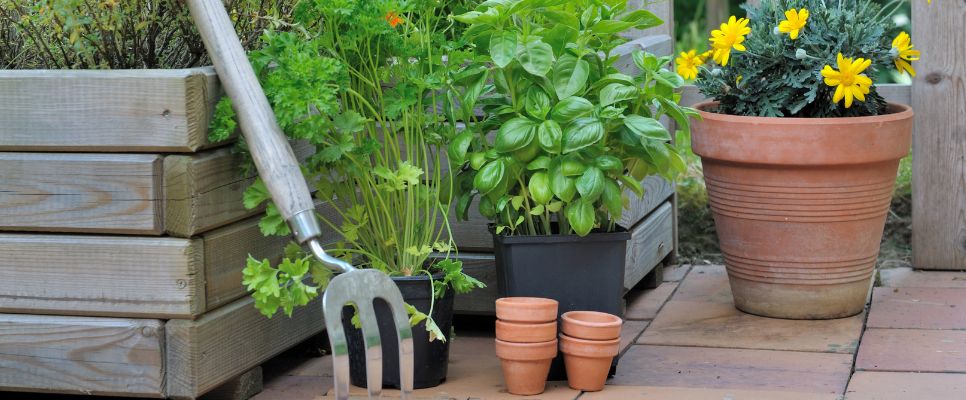
How to Water a Balcony Garden?
Watering is essential to keeping a healthy balcony garden. The quantity of water required varies depending on the plant species, the size of the pot, and the weather. Water in the morning since that is the time before it gets hot and evaporation starts. Insert your finger about one inch into the soil to check moisture; if it's dry, it needs some watering. They can be used, especially if you want to maintain a consistent supply of moisture under the plants without needing to water them daily.
Another method where the water is supplied slowly and steadily is by using drip irrigation systems. Group the plants on the balcony that have the same water requirements so that they don't get over- or under-watered. And finally, keep pots organized with trays underneath them to catch the water that's lost as spillover. It's likely going to be watered every day during summer, while in winter, watering may not be that frequent.
Which Plants Can You Grow in a Balcony Garden?
Balcony gardens can include vegetables, herbs, flowers, and small fruit trees. Vegetables like tomatoes, peppers, cucumbers, and beans grow well in limited space. Herbs like basil, cilantro, and oregano provide fresh seasoning for cooking. Edible flowers such as nasturtiums and violets beautify salads with taste. Dwarf citrus trees, such as lemon or lime, bear fruit in large pots. Climbing plants help provide green privacy screens: common varieties include ivy, morning glory, and jasmine. Shade-tolerant plants like ferns and hostas work well for balconies that don't get much sunlight.
What Containers Are Best for a Balcony Garden?
Using the correct container ensures healthy growth. Terracotta pots are well-aerated but evaporate water rapidly. Plastic pots hold water and are light. Ceramic pots are attractive but heavy. Fabric grow bags facilitate air pruning and avoid root rot. Hanging baskets use vertical space efficiently. Wood planters provide a rural appearance and a good level of insulation for the roots. Self-watering planters minimize constant watering. Vertical wall planters make the most of available space. Use pots with drainage to avoid waterlogged soil.
Extra Tips for a Successful Balcony Garden
- Opt for Suitable Planters: Select lightweight containers with proper drainage to avoid excess watering. Baskets, planters on a wall, and tiered units are perfect space maximizers.
- Know Your Balcony's Microclimate: Look for factors such as sunlight exposure, wind intensity, and heat reflectance from neighbouring buildings. Opt for plants compatible with these factors for optimal effects.
- Watering Techniques: Balcony flowers dry out sooner because of the wind and the heat. Opt for self-watering pots, watering trays, or a folding watering can for easier hydration.
- Utilize Privacy Screens: If wind is a problem, place a privacy screen or employ tall plants such as bamboo to serve as a windbreak. This will safeguard sensitive plants from damage.
- Seasonal Adjustments: In extreme summer heat, relocate plants to shaded locations or employ shade cloths to avoid leaf burn. In winter, relocate sensitive plants indoors if frost is predicted.
Conclusion
With the proper choice of plants, even the tiniest balcony can be turned into a green oasis. Low-maintenance plants, flowering plants, or space-saving varieties – whatever you like, there are a lot of options for your lifestyle. Knowing the conditions of your balcony and considering the basic care recommendations, you will have a lush garden all year round. So, put on your gardening gloves and begin turning your balcony into a lovely, cooling place!






